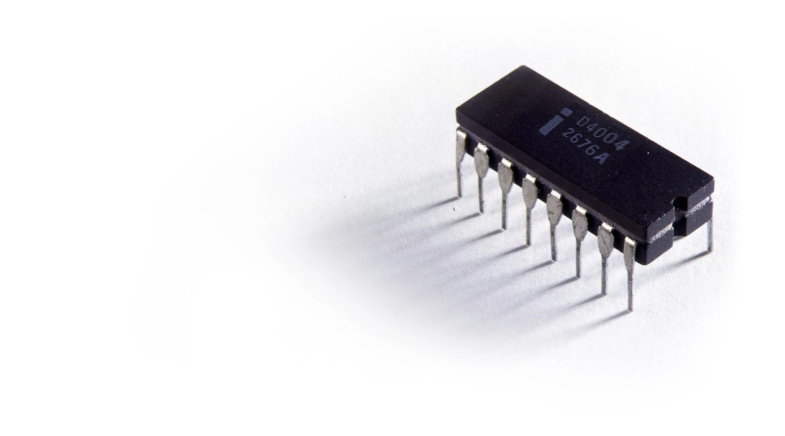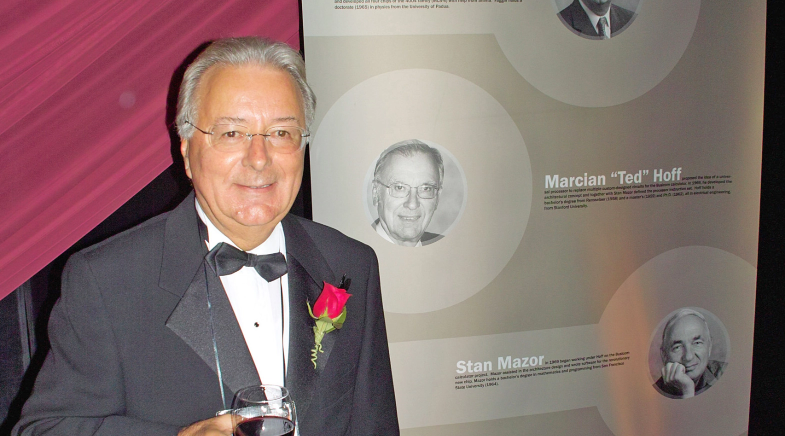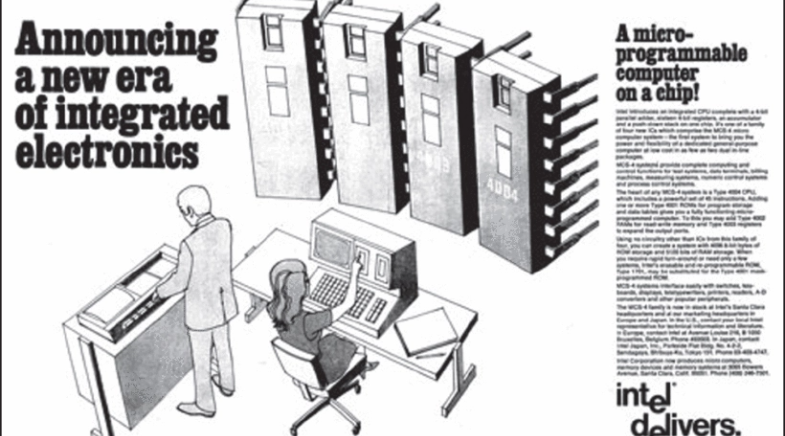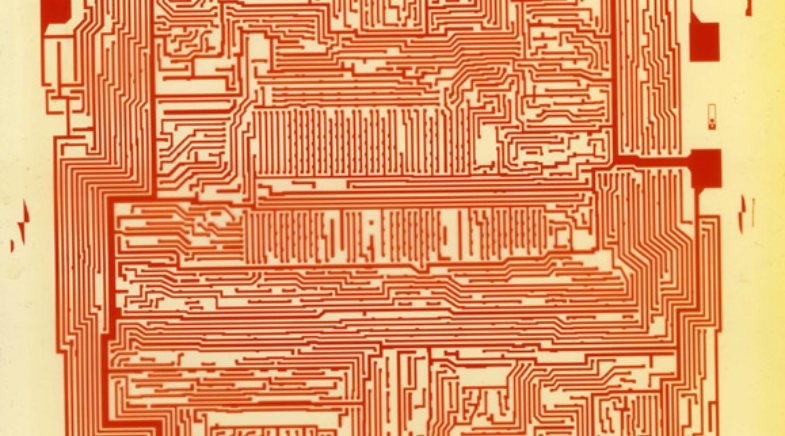The Intel chip that re-engineered the world
-
- from Shaastra :: vol 01 edition 03 :: Sep - Oct 2021

The 4004, the world's first microprocessor, has kept the gears of computer technology grinding.
In November 1971, an advertisement (at right), spread across two pages in Electronic News, an influential trade journal, announced the arrival of "a new era of integrated electronics". The claim, from Intel, a company that had then been around for only three years, may have sounded hyperbolic at the time. But, in fact, it understated the significance of the product whose launch was being advertised: "a micro-programmable computer on a chip!" The 4004, the first microprocessor to be commercially launched, has over the past 50 years had a profound effect on the personal computer industry; more importantly, it has touched ordinary people's lives in ways beyond measure. Successive generations of microprocessors have found widespread applications in devices that simplify and enrich everyday life. The current global shortage of semiconductor chips (see 'Time to chip in'), which has disrupted technology supply chains for the automotive, personal computing and consumer goods industries, is ironically a testament to just how central the microprocessor is in keeping the gears of computer technology grinding.
Designing the 4004 also put Intel, which had until then been preoccupied with memory chips, onto a higher orbit of growth. And yet, the company was oblivious to the potential significance of the microprocessor. In fact, when Busicom, a Japanese calculator manufacturer, approached it with a contract to develop custom chips for its machines, Intel considered it a distraction. It was late on the project execution, which left Busicom engineer Masatoshi Shima fuming. Intel later scrambled to salvage the project.

Three Intel engineers - Ted Hoff, Stan Mazor, and Federico Faggin - are credited with the success of the 4004 (although Intel briefly tried to play down Faggin's contribution). Patents number 3,821,715 and 3,753,011 list their three names, but Shima is also widely acknowledged as a driving force behind the 4004. Hoff and Mazor were in charge of the chip architecture, and Faggin was brought onto the 4004 team in April 1970 to design the chip.
By all accounts, Faggin's credentials, and in particular, the 'silicon gate technology', which he had developed earlier, were critical to the development of the 4004. The silicon gate technology for integrated circuits was far superior to the incumbent metal oxide semiconductor (MOS) 'aluminium gate technology': it allowed for twice the number of random-logic transistors and increased processing speed by up to 10 times. Two other inventions by Faggin - the bootstrap load with silicon gate, and the "buried contact" (a method to make direct ohmic contact between the polysilicon gate material and the junctions) - made it possible to improve speed and circuit density.
The global shortage of semiconductor chips, which has disrupted technology supply chains for the automotive, personal computing and consumer goods sectors, shows just how central the microprocessor is.
In the late 1960s, there was a race among companies to develop the first microprocessor.Fairchild, for instance, developed a CPU using MOS chips with four-phase logic, but as Faggin recalls, "that CPU was not a single chip and was never commercialised separately." Texas Instruments was working on a microprocessor project based on the Computer Terminal Corporation (CTC) architecture. That chip was completed in mid-1971, barely months after the 4004.
Although it was custom-designed for use in calculators, the 4004 could be used for other applications. Busicom had exclusive rights to the microprocessor, but Intel offered it a price concession if it would drop the exclusivity clause, which it accepted. Consequently, the 4000 family was unveiled in November 1971. It found wider application in many areas (see box 'Cowlars and Ka-ching' alongside).

Today, the global microprocessors market is valued at about $85 billion. Microprocessors are ubiquitous - in PCs, cameras, cellphones, automobiles, air bags, elevators, beepers, agricultural equipment, key chains, and so on. Former Intel Chairman Andy Grove said the 4004 "gave Intel its future". But more strikingly, it re-engineered the world.
1971
THE ARTIST'S MARK
Chip designer Federico Faggin, who perhaps saw himself as an artist, etched his initials 'F.F.' into the design of the pre-production 4004. Later, he moved it to the chip's border (at bottom right in picture above) evidently because he wanted to pack in additional circuits. In contemporaneous interviews, Faggin said: "I felt it was a true work of art, where each stroke was not only aesthetic but also function-specific and meaningful."
COWLARS & KA-CHING!
The 4004 chip was used in a variety of applications. Ted Hoff, who was in charge of the Applications Research group, recalled at a Computer History Museum event in 2006 that the chip found early applications in pinball machines, traffic light controllers, cash registers, bank teller terminals, and blood analysers. Gas stations used it for inventory control. Farmers too outfitted cows with collars ('cowlars') embedded with microprocessors to record the cows' nutrient input - to correlate it with milk production.
Have a
story idea?
Tell us.
Do you have a recent research paper or an idea for a science/technology-themed article that you'd like to tell us about?
GET IN TOUCH
















